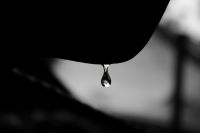25 facts about Cosmos
The cosmos or universe is, by definition, all that has existed, exists, and will exist. It is built by three basic elements: space-time, energy, and t ...
19 facts about graphene
This increasingly popular material, which is a flattened form of carbon arranged in cubic structures, may revolutionize our world and the state of cur ...
13 facts about snow
Snow, the white fluff of the winter landscape, is not only one of the most charming atmospheric phenomena but also a small wonder of nature. Falling f ...






















